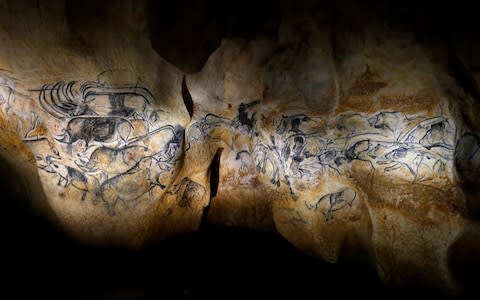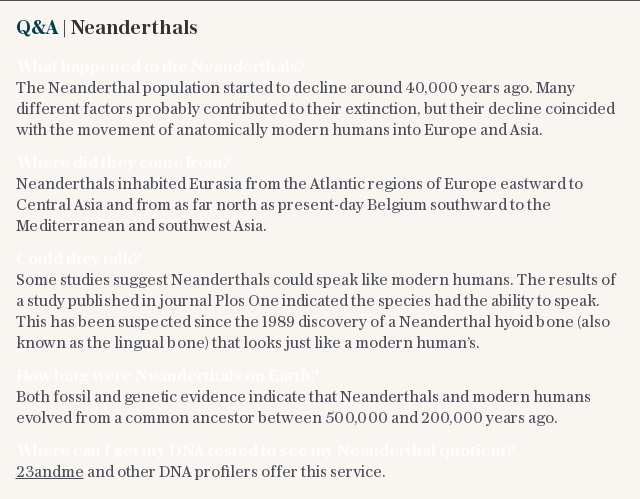Did Neanderthals' poor art ability contribute to their extinction?

Neanderthals' occasional forays into cave drawing left a lot to be desired.
But while the dubious artistic prowess of these prehistoric cousins to early humans may not seem of much importance, new research has found it is closely related to their inferior hunting skills and may ultimately explain why they became extinct.
Analysis of charcoal drawings and engravings by primitive homo sapiens, such as in the cave at Chauvet-Pont-D’Arc in France, reveal elaborate depictions of animals including lions and deer in a variety of scenes.
Of neanderthal art, however, there is virtually no evidence, and what disputed examples there are mainly comprise rudimentary straight lines and no recognisable images.
Now scientists at the University of California have said this is closely related to a lack of hand-eye coordination due to the fact they lived off easy-to-kill prey.
Existing mainly in Eurasia between 120,000 and 35,000 years ago, Neanderthals were able to feed themselves on less dangerous animals like horses, reindeer and bison, meaning they could afford to get close and rarely needed to throw their spears.
By contrast, homo sapiens - which share 99.7 per cent of Neanderthal DNA but are a separate species - spent hundreds of thousands of years hunting wary and dangerous game on the open grasslands of Africa.
Throwing spears was often the only way to hunt in relative safety.

In the new study Professor Richard Coss, a psychologist and artist, argues the mental faculties which allow a human to visualise the arc of a spear is the same, or very similar, to that which enables drawing.
"Neanderthals could mentally visualise previously seen animals from working memory but they were unable to translate those mental images effectively into the co-ordinated hand-movement patterns required for drawing,” he said.
"Since the act of drawing enhances observational skills, perhaps these drawings were useful for conceptualising hunts, evaluating game attentiveness, selecting vulnerable body areas as targets and fostering group cohesiveness via spiritual ceremonies."
His research, published in the journal Evolutionary Studies in Imaginative Culture, also analysed genomics, neuroscientific evidence and animal behaviour.
From this he proposed a new theory for the evolution of the human brain - that Homo sapiens developed rounder skulls and grew bigger parietal cortexes.
This is the region that integrates visual imagery and motor coordination.

Professor Coss, who taught drawing classes early in his academic career and whose previous research focused on art and human evolution, used photos and film to study the strokes of charcoal drawings and engravings of animals made by human artists 28,000 to 32,000 years ago in the Chauvet-Pont-d'Arc Cave.
Published in the journal Evolutionary Studies in Imaginative Culture, his research also analysed genomics, neuroscientific evidence and animal behaviour.
As a result the advent of drawing could have set the stage for cultural changes, he said.
"There are enormous social implications in this ability to share mental images with group members."
The theory that Neanderthals practised art, which is denied by some scientists, relies on a small number of examples, such as one found in the back of Gorham’s Cave, Gibraltar.
Resembling a rough grid for a game of noughts and crosses, researchers believe it is the work of Neanderthals because tools from that period were found below.
Other candidates include motifs in caves in northern and southern Spain.


